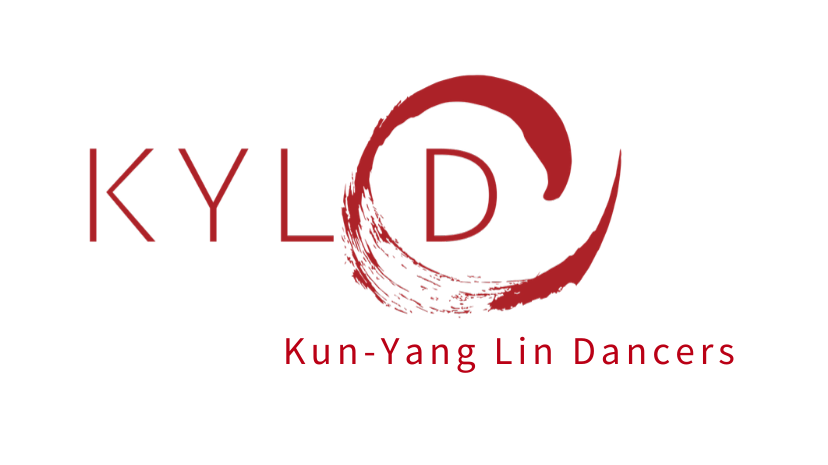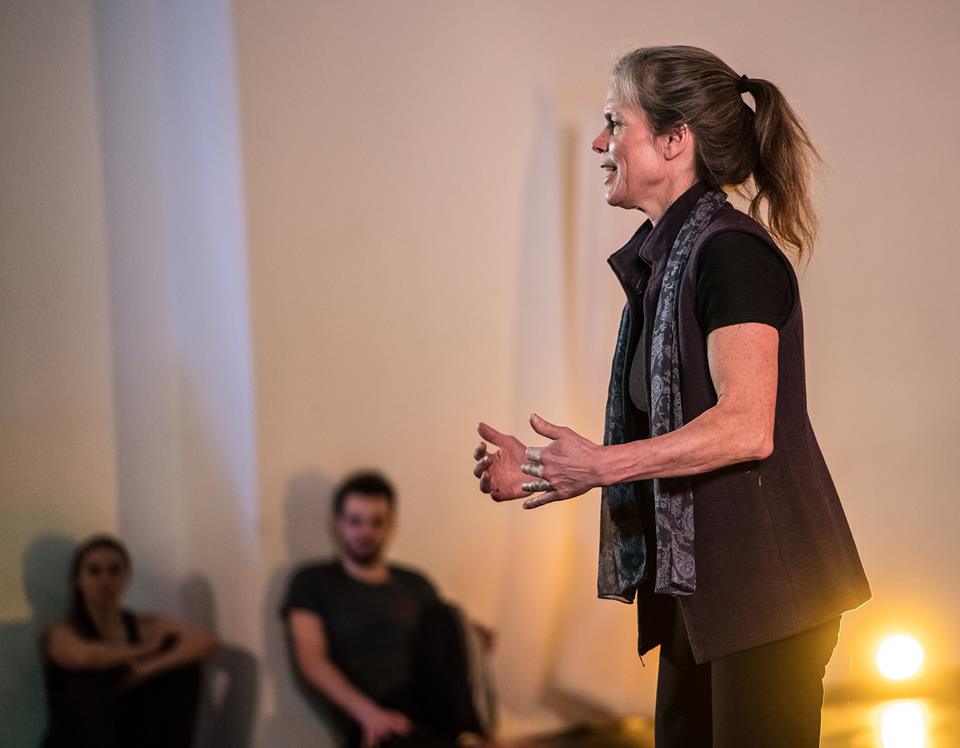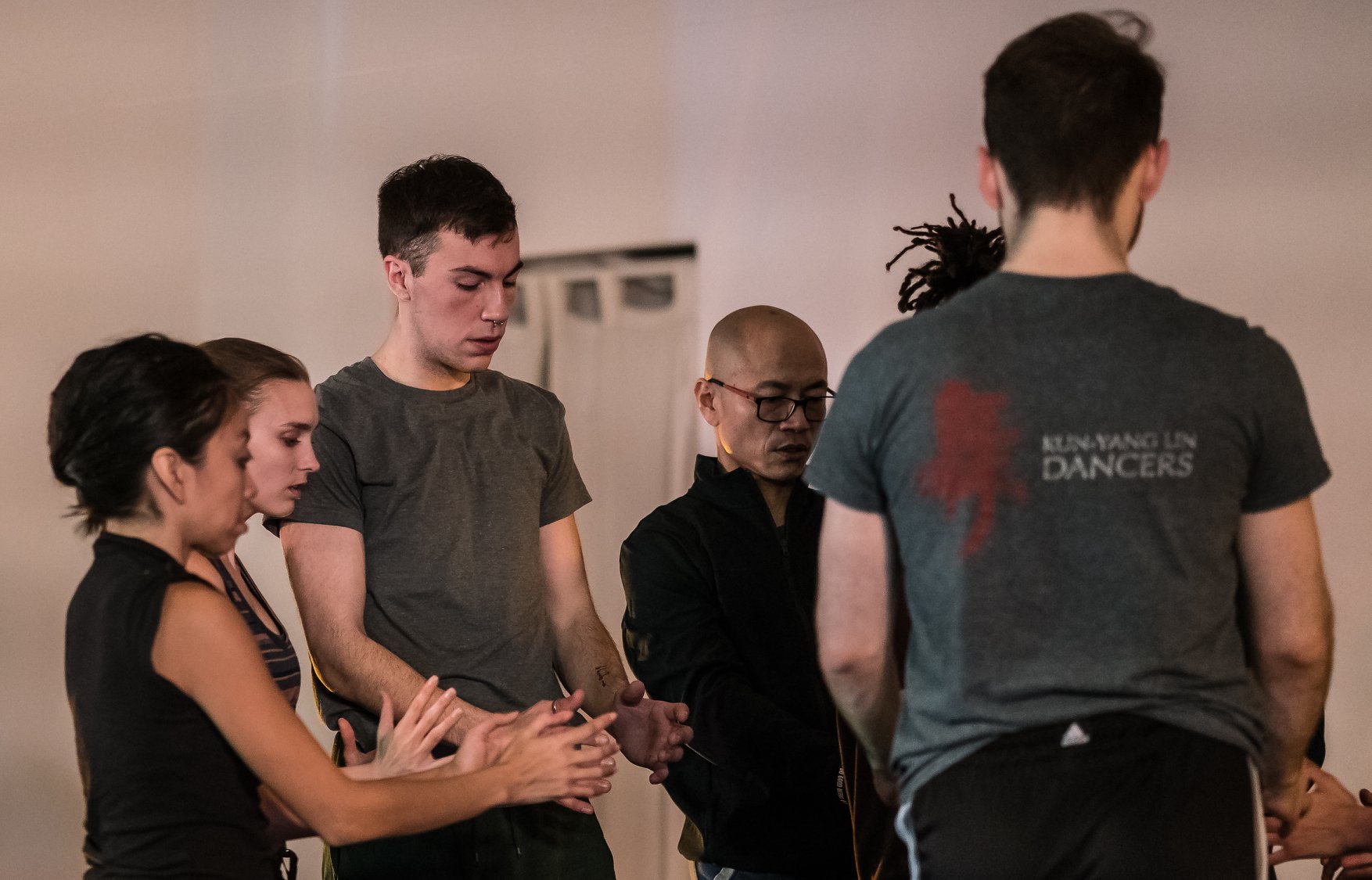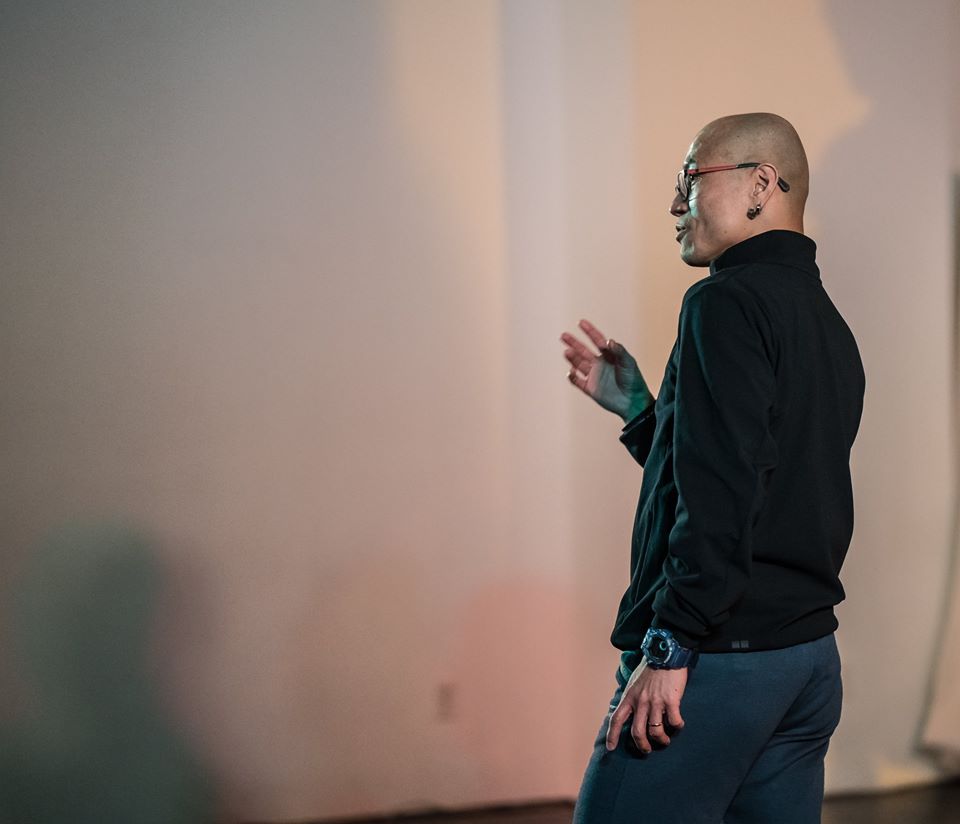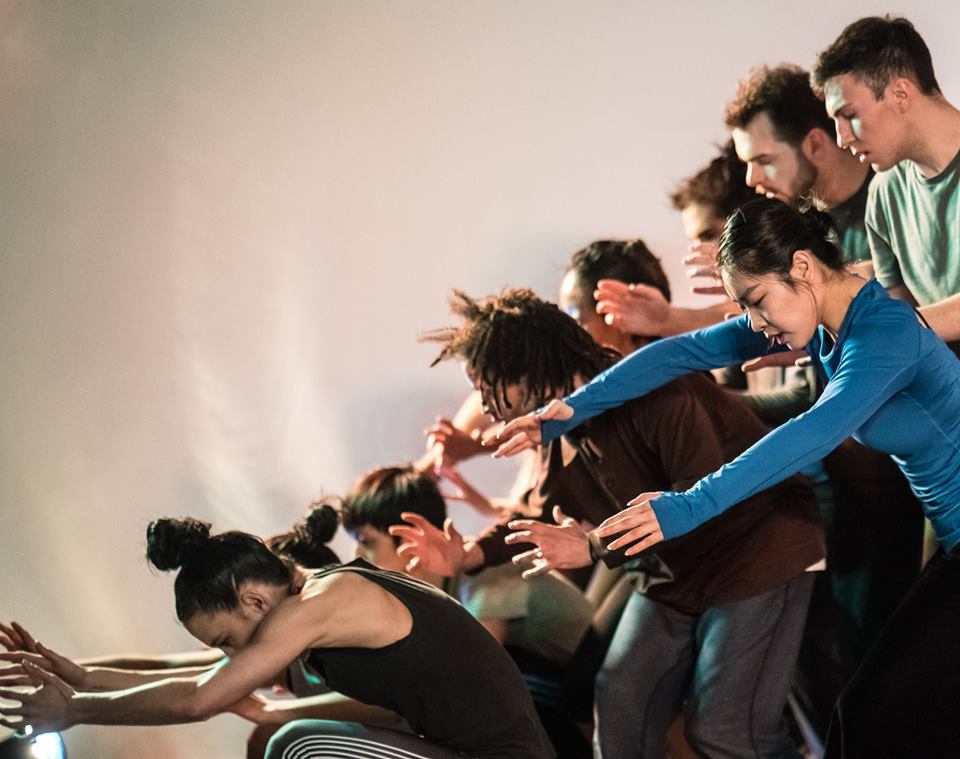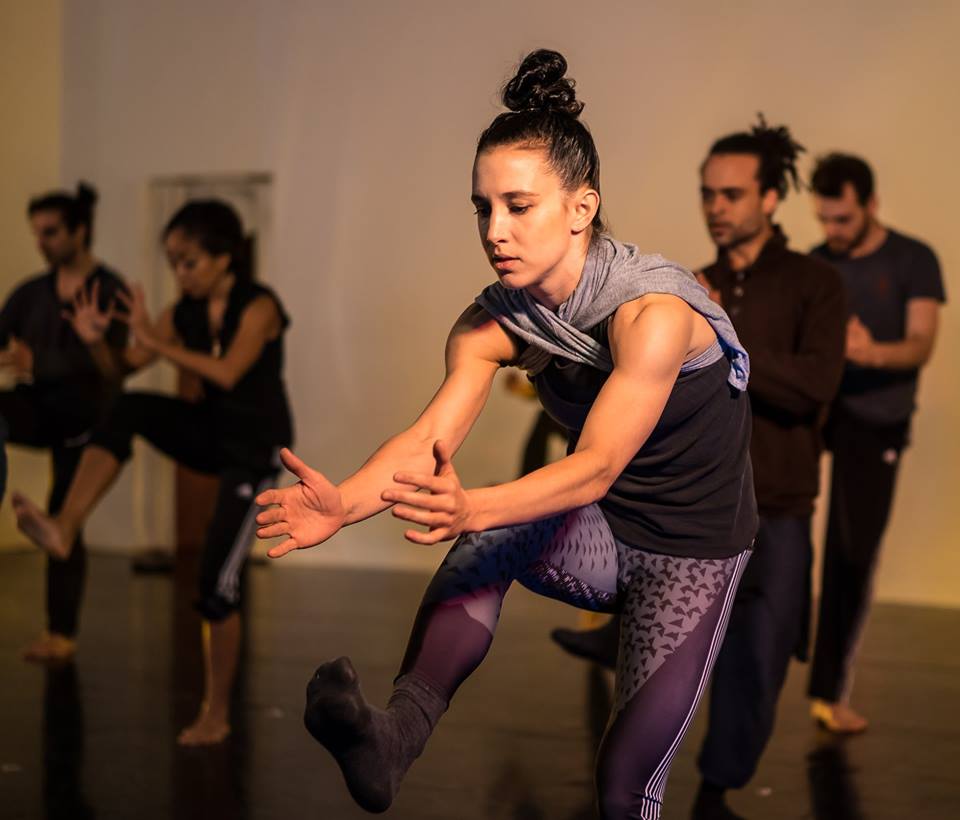I pass through two doors as I walk with the other audience members into the third and final Open Studio Series. Kun-Yang and the dancers are in a circle, tapping their bodies. This is a Qigong practice that Kun-Yang leads during his CHI Awareness classes designed to stimulate and energize the body and the mind. The dancers move around the space, continuing to warm up. They gather on the side of the stage space, opening their palms and closing their palms, their breath echoing the expansion and contraction of their bodies. As if of one mind, they perform a unison sequence from Faith Project/ THE DOOR. They move in silence, guided by their awareness of each other and their breath.
I catch my own breath. This is a sacred moment in the KYL/D pre-performance ritual. Before every performance, the company comes together to perform a unison sequence from the piece in silence. This allows the dancers to drop into the mental and physical environment of the work and solidifies their intention as a community. This is the moment where the individual transforms into the collective and the dancer becomes the dance. Having performed this ritual many times, I almost can’t believe that Kun-Yang has allowed the audience to witness this intimate metamorphosis.
But this is what Faith Project has been all about – creating a safe space to reveal, share, and move through the vulnerable moments of those things that we most love, we most fear, and from which we draw our greatest strengths. (You might remember that these were the three questions that Kimerer posed during the first Story Circle and became impetus for some of the company’s research and movement investigation.)
As in the previous Open Studios, Executive Director Ken Metzner welcomes the audience into KYL/D’s home, the CHI Movement Arts Center. He submits the limelight to the dancers, Kun-Yang, Thought Partner Kimerer LaMothe, and Composer Cory Neale. I recognize that these Open Studios are opportunities for KYL/D to demonstrate the discipline and goals of Faith Project. In the theatre, the dancers will (figuratively and literally) take the stage and the process to get here – the hours of collaborative conversations, research, sound creation, lighting design, and multimedia experimentation; the trial and error, the messiness and successes, the joys and frustrations – are left in the past. As often in our digital world (for example, on social media), the public doesn’t get to see the journey that the company took to get to these moments. But through the Open Studios, KYL/D offers a glimpse into these less-than-perfect moments and in doing so, models a process for conversation inside and outside of seemingly divergent topics of faith and contemporary dance.
Kimerer talks about her role as Thought Partner, asking us to think about neutral shapes and symbols that have manifested with meaning in different religions: wall, ocean, sun, mother, father, mountain, and door. She reminds us that each of these shapes is an invitation to move and that we bring our own experiences to this movement. (“When you feel the warmth of the sun, you move to take off your jacket,” she provides as an example.) Kimerer asks, “What would it be like to think of religion as a door?” We go through doors everyday and are familiar with what the feeling and act of approaching a door – walking, knocking, twisting knobs, and being transformed by what’s on the other side. She suggests that the metaphor of the door is the lens through which we see and respond to the world.
Cory reflects on his participating in Faith Project, revealing that in creating the soundscore, he faced his own challenges. His one answer to Kimerer’s three questions was “My own voice”, which he used during the movement/sound improvisational responses during the Story Circles because “it was all I had”. He used the recordings of his voice and the voices of the other participants to “abstract something traditional to create a language that’s never been spoken as a way to create a (new) ritual.”
Upon closing the final Open Studio, Kimerer reminded us that “Dances don’t have simple meanings or singular meanings… Dance can help us remember what we know as bodily selves and can awaken things so we see them in a new way. (Witnessing) movement opens up a sensory opportunity. The dancers on stage remind us of the movements we (the audience) make.
“This dance, Faith Project/ THE DOOR, invites us to come up with new ways of imagining what could be.”
~ Jessica Warchal-King
NOTE: To make a comment on this blog, you do not need to make an account- just click "Comment(s)" in bottom left hand corner, write your comment in the comment box that appears, click "Post Comment..." then type in your first and last name and click "Comment as Guest")
Major support for Faith Project has been provided by The Pew Center for Art & Heritage, with additional support from the National Endowment for the Arts
